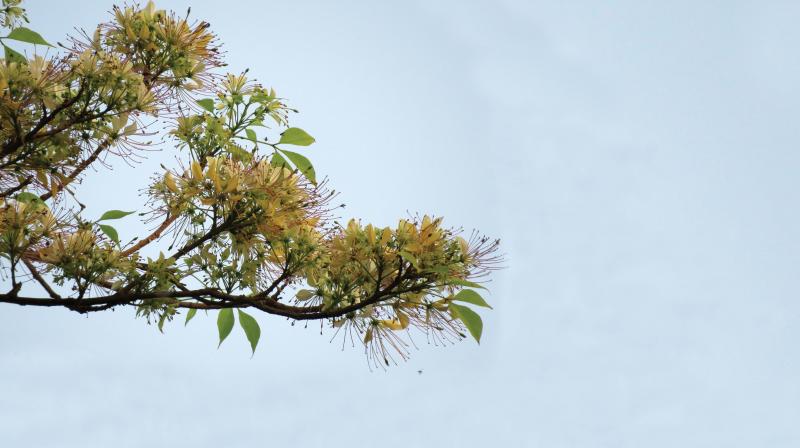When Neermathalam blooms

Thiruvananthapuram city holds a special place in the historical and cultural scenario of Kerala. It also offers many fascinating sights. As an ecologist, however, it is the ecology of this city of seven hills with a history dating back to the 10th century that has held my attention. The hills, the backwaters, the freshwater lakes and the ocean make the city a paradise to understand ecosystems. Apart from this, the vestiges of pristine ecological niches are most displayed by the trees that are part of the cityscape. Among these, one can find the endemic and endangered Malabar iron wood tree, the tall and stately Myrobalan, the rare and unique Kaim tree, and the slender Haldu along with the critically endangered Agar wood right in the middle of the city.
Besides, there are a few trees the names of which would put you in a cherished ride with a well-known writer. The Neermathalam trees growing on the Ayurveda College campus and in the Manaveeyam Veedhi are the most famous ones. A few months back, some of us were taken aback by the state of the tree that stood completely bare. But a slight change of weather with cool winds and a gentle shower changed the scene as the tree burst into tender leaves and then, flowers. There starts the festive season for bees and butterflies.
One could not but go back to the much read and discussed autobiographical account of Madhavikutty (Kamala Surayya), with the charming title Neermathalam Pootha Kalam (When the Neermathalam Bloomed), is also a botanist’s expedition into the bygone biodiversity of Kerala. With reference to as many as 15 trees starting from the notorious Black Varnish tree to the petite coral jasmine, the fragrant Devil tree and the vibrant Flame of the Forest, all of which grew in the wild garden of her ancestral home, Madhavikutty takes you on a walk with her.
As the Neermathalam tree exhibits its extravagant blooms this year, many of us went on a walk posthumously with our dear writer. To read her subtle description of the colour of the flower of the Neermathalam, also known as Three-leaved Caper or Garlic Pear, as ‘colour of butter’ and to understand the depth of her perceptions when she portrays the scent of the flower ‘as the fragrance emanating from the neck of a freshly bathed baby’ are fascinating experiences.
Far from the river side habitat of the semi evergreen home where the tree is naturally found, the Neermathalam exhibits all its biological cycles of leaf fall, sprouting of new leaves and blooming of flowers with a regularity that defies the pollution and other disturbances this city is filled with. The dedicated effort of a group of women in the city, Idam — A space for women, resulted in the Neermathalam being planted in the Manaveeyam Veedhi by poet Sugathakumari. As the flowers fade in the summer heat, we hope to make enough saplings of this slender beautiful tree that can break the monotony of our streets in future.
(The writer is an ecologist based in Thiruvananthapuram coordinating the citizen’s initiative, Tree Walk.)

